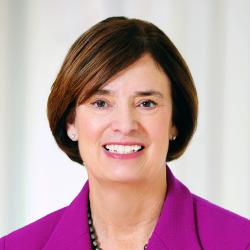Editor’s note: This article is part of an AAMC effort to educate policymakers and the public about the value of academic medicine and the role that the nation’s medical schools and teaching hospitals play in improving health. It also has been published as sponsored content on www.politico.com.
America faces a shortage of up to 122,000 physicians by 2032, in both primary care as well as in the specialty care an aging population needs. What’s more, with one-third of our nation’s doctors over the age of 65 and nearing retirement in the next decade, access to a doctor’s care will become more difficult, particularly in rural areas and other parts of the country that are already experiencing shortages of physicians.
At least 84 million Americans currently live in locations that have been federally designated as physician shortage areas — a situation that is likely to worsen unless our nation takes steps to significantly increase the number of doctors trained each year.
The physician shortage is also likely to have compounding effects as an aging, more diverse population requires new, innovative treatments for everything from substance use disorders to complex illnesses and diseases to emerging threats, like antibiotic-resistant infections.
These challenges present significant risks to our country. But there is one important facet of the U.S. health care system that focuses on the future and prepares America to meet these challenges, in addition to providing the care that patients need every day: the nation's 154 accredited medical schools and more than 400 major teaching hospitals and health systems.
Collectively known as “academic medicine,” these institutions work together to educate and train the next generation of physicians, biomedical scientists, and other health professionals. As major centers of research, they discover and pioneer new and more effective medical treatments that set the standard of care throughout medicine. And with leading medical experts, the most advanced technologies, and the latest treatments, these centers of medical excellence also work to develop more effective models of health care delivery that improve the quality of patient care and lower costs.
To help address the looming doctor shortage, for example, the nation’s medical schools have increased class sizes, and 26 new medical schools have opened in the past decade. Altogether, these institutions have expanded enrollment by 30% to help ease the effects of the doctor shortage. Along with educating more doctors, medical schools and teaching hospitals are training doctors in new ways and enhancing and refining curricula to ensure tomorrow’s health care professionals are getting the training they need to improve the overall health of our population. Examples include educating future doctors to address social determinants of health, responding to health care crises like the opioid epidemic, and providing care for ongoing health care needs such as obesity, smoking, diabetes, and heart disease.
A recent study published in JAMA found that patients treated at a major teaching hospital have up to 20% higher odds of survival, compared to those treated at nonteaching hospitals.
By training in teaching hospitals, new doctors, nurses, and other health professionals also learn in an environment that integrates education, patient care, and medical research, providing benefits not only to the health care workers but also to the patients in their care. In fact, a recent study published in JAMA found that patients treated at major teaching hospitals have up to 20% higher odds of survival, compared to those treated at nonteaching hospitals. But training the doctors of the future is only one piece of what’s required to care for our aging population and prepare the nation to face emerging health care needs.
Medical innovations are essential to tackling future health needs
Combating diseases and epidemics can only be sustained with continued medical advancements. The nation’s medical schools and teaching hospitals conduct 55% of the extramural medical research supported by the National Institutes of Health (NIH). This research has saved lives and improved the quality of life for millions, as well as produced many medical firsts and breakthroughs, including better treatments for heart disease, stroke, and diabetes; new techniques such as organ, bone, and stem cell transplants and minimally invasive surgery; novel discoveries and cancer treatments that have saved more than 2.4 million lives since 1991; and all 210 drugs approved by the U.S. Food and Drug Administration between 2010-16.
Medical schools and teaching hospitals improve the health of their communities
Medical schools and major teaching hospitals also provide communities with the kind of complex care often unavailable elsewhere. These institutions operate 71% of accredited level-one trauma centers and 98% of the nation’s 41 comprehensive cancer centers. In addition, major teaching hospitals — which are only 5% of all hospitals in the United States — provide 69% of all burn unit beds, 63% of pediatric intensive care unit beds, 19% of all alcohol unit beds, and 24% of all inpatient psychiatric beds. They also provide treatment for a disproportionately high percentage of Medicare and Medicaid beneficiaries, as well as for those who are uninsured.
When the worst happens, medical schools and teaching hospitals are at their best. With the highest-level trauma centers and around-the-clock medical experts in every specialty, these institutions are ready to address every emergency, whether a terrorist incident, an infectious disease outbreak like Ebola, or a natural disaster. When hurricanes devastated Puerto Rico and much of the East Coast In 2018, medical schools and teaching hospitals were on the frontlines in a war against the elements, mobilizing to care for the sick and wounded.
These institutions are also powerful contributors to the economic health of their communities. A recent study showed that AAMC-member institutions contributed more than $562 billion in value to the national economy in 2017 and supported more than 6.3 million U.S. jobs — around 3.3% of the nation’s total jobs. Medical research conducted at AAMC-member medical schools and teaching hospitals was responsible for another 313,604 jobs and added $25.4 billion to local economies in 2017.
With the highest-level trauma centers and around-the-clock medical experts in every specialty, these institutions are ready to address every emergency, whether a terrorist incident, an infectious disease outbreak like Ebola, or a natural disaster.
And through clinical programs, community partnerships and outreach, research, and health care provider education initiatives, the nation's medical schools and teaching hospitals also run innovative programs to address underlying social and economic factors in their communities that can lead to poor health. This includes providing access to healthy food, adequate housing, education, access to transportation, and other social determinants of health.
Congress has a major role to play to meet the health care challenges of the future
But the significant efforts of America's medical schools and teaching hospitals cannot alone guarantee success. Congress needs to continue its commitment to addressing the future health care needs of our nation through support for these institutions and their critical missions as well.
First, Congress must do its part to address the doctor shortage by ensuring there are enough doctors to meet the needs of America’s growing and aging population. In particular, Congress must lift the more than 20-year cap on the number of federally supported residency training positions. Bills currently in Congress would increase the number of Medicare-funded residency training positions, allowing teaching hospitals to train enough physicians to meet the country’s health care needs.
Second, policymakers need to help sustain the unique expertise and critical community services provided by teaching hospitals that help treat the most complex and difficult medical cases and provide care for the most vulnerable patients, including those on Medicaid.
The work of the nation’s medical schools and teaching hospitals is indispensable to the country’s overall health.
Third, Congress must build on the strong, bipartisan investments in NIH in recent years to ensure sustained, predictable funding for medical research. This is essential to continue the scientific breakthroughs and innovations that offer hope to millions of patients suffering from deadly and costly diseases — like cancer, Alzheimer’s, and Parkinson’s.
Preparing for future challenges requires a collective effort. The work of the nation’s medical schools and teaching hospitals is indispensable to the country’s overall health — and with strong federal support of their efforts to address the doctor shortage, sustain vital medical services, and develop better treatments for serious illnesses, the nation will be healthier, stronger, more competitive, and better prepared for whatever challenges lie ahead.

